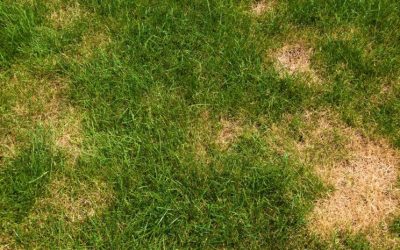Maintenance

Brown Patch
Brown Patch is as the name would suggest, an appearance of brown patches on lawn. Circular brown areas, up to 60 cm across, develop in humid environments at a temperature of about 28 degrees. Although it varies for different species, the main pattern of the patches is healthier lawn in the centre, surrounded by a smokey-grey halo.
Spring Dead Spot
Spring Dead Spot affects root tissue in autumn and winter and usually appears on lawns just as they are leaving dormancy in early spring. The disease presents itself as circular white-tan spots. Spring Dead Spot is commonly found in Couch grasses but most species are susceptible to this grass disease.
Grey Leaf Spot
Grey Leaf Spot is particularly destructive to buffalo lawns and in severe cases can create withering and scorching, much like drought damage. More commonly, Grey Leaf Spot appears during the warm seasons as grey lesions with a dark brown outline. When it is cold, these can appear as water-soaked.
Dollar Spot
Infected areas of dollar spot appear as coin-sized patches of sunken, dead grass. This is a fast spreading disease that can rapidly destroy large areas of lawn in areas of dampness, low nitrogen and temperatures between 15 and 30 degrees.


Fairy Ring
Although this grass disease is present throughout the year, its symptoms are visible from autumn to spring. Fairy Ring creates large rings of extra-lush growth, or it creates rings of mushrooms and dead grass.
Rust
Grass blades infected with the Rust disease start by yellowing off vertically and then develop orange spores that burst and create more orange spots all over the leaf. Rust works rapidly at temperatures between 20 and 30 degrees.
Slime Mould
Slime Mould isn’t technically a grass disease. It is a non-plant parasite that isn’t aesthetically pleasing. It appears as patches of yellow, brown or grey, often looking like vomit. It is numerous tiny fruiting bodies clustered together and can affect the usability of the lawn.

Treatment
The best course of treatment is, of course, prevention but you can also use a fungicide such as Mancozeb. Before using the fungicide, it is always best to try and treat it with natural measures.
Diseases tend to foster in excess humidity and nitrogen. Try not to fertilise too much, especially while the disease is still present. You should be sure to avoid watering in the evenings and ideally water in the mornings. Make sure you don’t mow while your lawn is wet, reduce shade, reduce the thatch in your lawn and generally reduce the dampness of your lawn. Another factor could be soil compaction, it would be a good idea to aerate your lawn.
Getting rid of thatch will reduce the Slime Mould as it feeds upon the dead grass. Allow the grass to get more sun, dry out a bit more and the Slime Mould should decrease.
Recommended for you...
What is the Best Grass for a Lawn? A Complete Guide to Top Choices
Discover the best grass options for your lawn with our complete guide. Make informed choices for a lush, healthy yard. Read more to find your ideal grass!
Choosing the Right Weed Killer for Your Sir Grange Zoysia Lawn
Discover the best weed killer for Sir Grange Zoysia and essential tips for effective application. Enhance your lawn’s health and beauty!
Why Is My Zoysia Grass Dying? Common Causes and Solutions to Revive It
Is your Zoysia grass struggling? Discover common causes of decline and effective solutions to restore its health. Read the article for expert tips!



